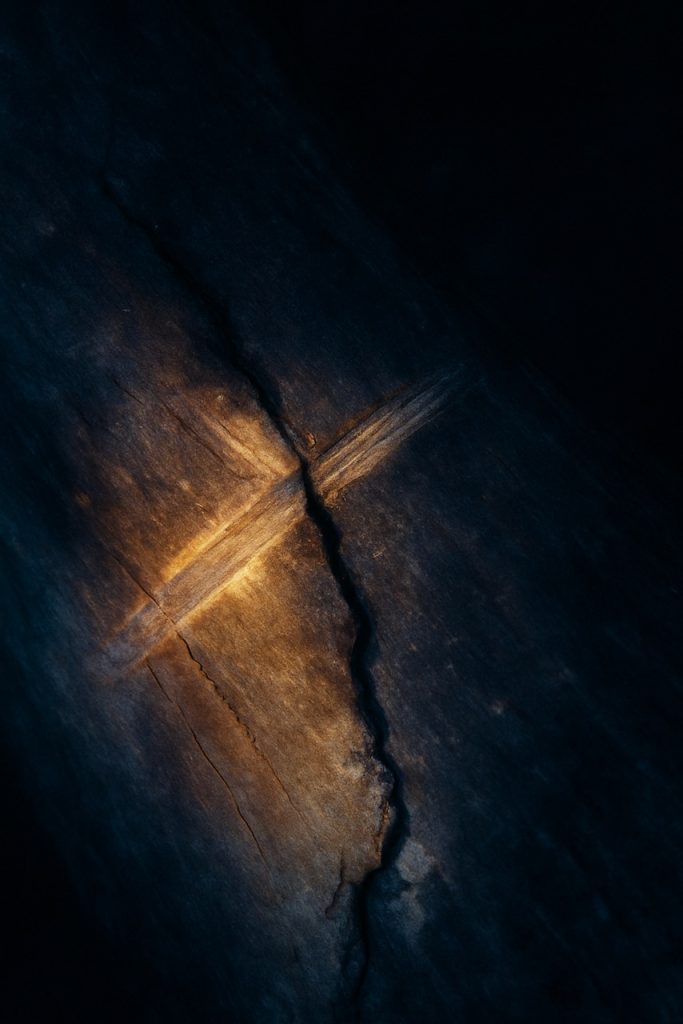Semi-finalist 2025
| Submitted by: | Tristan Mula |
| Department: | Anthropology |
| Faculty: | Arts |
This image captures saw marks, known as kerfs, on an elk tibia burned to simulate real-world forensic scenarios. As remains are exposed to fire, saw mark visibility degrades due to warping, fragmentation, and elemental loss. My research analyzes when these kerf marks become forensically unusable using digital imaging filters such as blue, red, polarized, and macro photography to enhance contrast at different burn stages. Portable X-ray Fluorescence analysis complements this by identifying changes in calcium and phosphorus levels that may correlate with the disappearance of trauma signatures. By tracking shifts in light and elemental decay, my research seeks the moment when violence falls silent, and the last trace of trauma disappears into ash.
Was your image created using Generative AI?
Yes.
Did you upload any materials into an AI tool to help generate your image?
Yes.
Which model of generative AI did you use?
Canva AI, DALL-E 2 by OpenAI.
How was your image created?
This image was captured using a Keyence VHX digital microscope as part of my forensic anthropology research, which examines when kerf marks on bone become forensically undetectable after exposure to fire. The elk tibia was inflicted with sharp force trauma and then burned to simulate conditions often encountered in forensic cases. The image captures a single saw-inflicted kerf mark intersected by a heat-induced fracture. Using the Keyence system, I photographed the bone at high resolution under various lighting conditions, including red, blue, and polarized filters, each enhancing different structural details depending on the burning stage. To create the final image, I used Canva and OpenAI AI-generated assistance to fuse the lighting effects into a single representation. I refined the prompts to enhance the interplay of light and shadow while preserving forensic accuracy, capturing how trauma visibility degrades across stages of carbonization and calcination.
How did you craft your prompt to guide the generative AI in creating your image?
My goal was to share the forensic challenge of disappearing trauma in burned bone while also creating an image reflecting my research’s layered nature. Since I am not a skilled photographer, I prompted the AI to generate an artistic rendering based on my real microscope image. I described the rough textures of a burned tibia, the intersecting kerf and heat fracture and asked for lighting that transitioned from golden to deep char tones to reflect burning stages. I refined the outcome by enhancing the lighting and surface texture to better reflect the cracking, shrinkage, and surface alteration in my research specimens. I experimented with several generations, adjusting descriptions to emphasize the interplay of light and shadow without distorting the forensic accuracy. No stylization settings were used.
Please describe what you uploaded to the AI tool, and confirm that the material is your original work, licensed for use (e.g., Creative Commons), used with proper permission.
I uploaded a microscope image I captured during my research to generate a more artistic version using AI. The original photo depicts a burned elk tibia with a saw kerf and a heat-induced fracture, taken with a Keyence VHX-2000 digital microscope at the University of Alberta. The image is entirely my own, created as part of my academic research, and does not contain any people or third-party copyrighted material. I used AI to enhance lighting, texture, and color contrast to better represent the stages of bone burning while preserving the scientific accuracy of the kerf and fracture features.
Where is the image located?
Anthropology Digital Imaging Lab, University of Alberta, using keyence microscopy for imaging and measurement.

